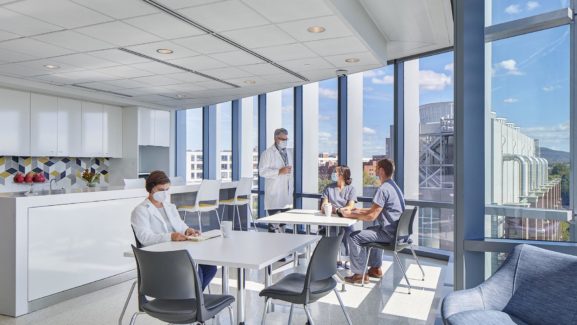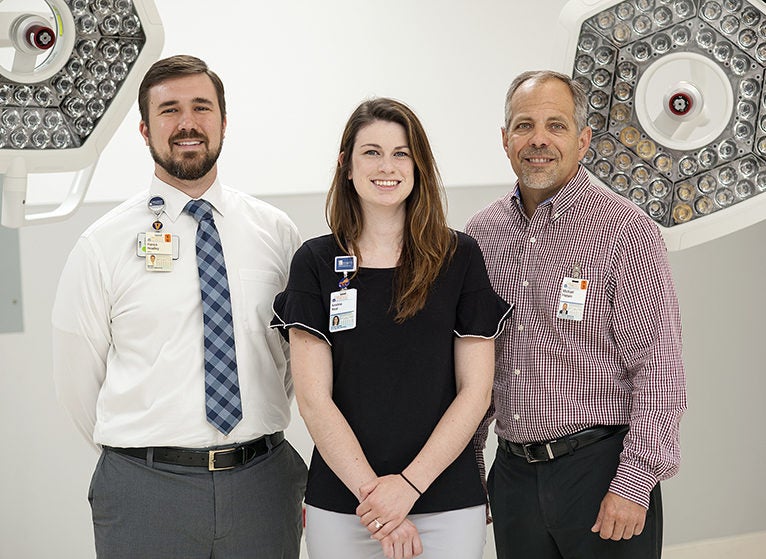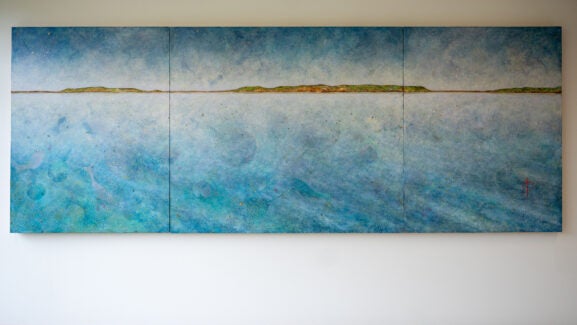

(l-r) Patrick Headley, Manager, Clinical Engineering Professional Services; Kristina Neal, Clinical Engineer; and Mike Friesen, Director of Clinical Engineering
How a 2D Box Helped Equip Our New Emergency Department
If you can, attend the September 13 new Emergency Department open house and tour the patient rooms. While there, close your eyes and imagine the room being an empty box. By doing so, you will be standing in the shoes of our clinical engineering team.
As part of planning for the new ED, the clinical engineering team started with an empty, two-dimensional box on a blank sheet of paper. To them, this simple shape was something special: It was the first step in creating a comprehensive move plan. The finished plan specifies the precise placement of every device in the new ED and ensures that all equipment arrives in the correct location.
A project like this is like solving a difficult (and giant!) puzzle — the kind that, before you can even start, you have to figure out what the pieces are, what shape they should be, and how they may affect nearby pieces. “We need to make sure everything fits together in a way that works for the patients,” says Clinical Engineer Kristina Neal.
Through countless conversations and design iterations, the team worked its magic. They assessed factors such as power requirements, size, and heat output for each device. They also determined how it would operate and interact with other equipment in a room. Ultimately, this information evolved into the design of the room and the move plan.
Mike Friesen, Director of Clinical Engineering, says his team is thrilled to see its design work come to life. “We’ve been planning in a 2D environment, on paper, and now, this summer, we’ve finally been able to see these spaces in full 3D.”
Huge Team Effort
According to Friesen, the new ED was made possible by teamwork, partnerships, collaboration, and communication. He acknowledges the support provided by a huge multidisciplinary group that includes architects, engineers, medical equipment vendors, mechanical and electrical contractors, clinical departments, physician and nursing leadership, operational readiness teams, the project management office, front-line staff, and many more.
Friesen says their mission on this project was to construct a space where technology supported or enabled a positive change in patient outcomes. And they’ve done exactly that.
RELATED READING:
Latest News




We are hugely fortunate to have the expertise and partnership of our Clinical Engineering colleagues in so many critical projects around the health system. We could not deliver the care we do without you — thank you!